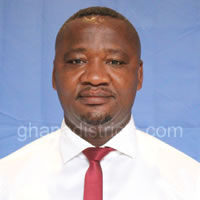EDUCATION
DISTRIBUTION AND LOCATION OF SCHOOLS
Adansi North District is a rural district with most of the communities situated in the hinterland. The number of communities along the major road is far less than those in the hinterlands. Most of the Basic Schools are public whilst few are private. The rest of the institutions including the Teacher Training College are public.Most of the pre-schools, primary and J.H.S are located in the rural circuits. Though five of circuit centres are located along the road. Over 70% of the schools in the circuits are in the hinterland.
Table 1 below gives an account of the number of circuits with their corresponding schools (both public and private)
Table 1 above shows that Akrokerri Circuit had the highest number of schools in the District. This has been attributed to the fact that:
1. The Circuit had the highest school enrolment which called for establishment of mores schools.
2. The circuit was advantaged in terms of infrastructure which is a pulling factor to residents.
3. Most parents in the circuit, especially at the circuit centre are well educated and public workers who encourage their
children to go to school.
The table also shows that Dompoase circuit had the least number of schools. Some of the factors identified as having accounted for that are;
1. The typical rural nature of the area with farming as the main occupation.
2. The settlements are scattered in nature with less number of children of school going age which makes the sitting
of schools difficult.
3. Attitude of inhabitants towards education and lack of unit communities and other community groups to help in enrolment drive.
PHYSICAL FACILITIES
the District has 94 Pre-schools, 99 Primary Schools, 58 Junior High Schools, 4 Senior High Schools and 1 College of Education. Most of the Basic School buildings are in deplorable state with cracked walls, rotten windows and door frames, rusting and leaking roofs. The situation is more pronounced in the remote areas, ie Aduposo D/A Primary, Asirifikrom D/A J.H.S etc. are weak and temporary structured. The situation needsImmediate intervention if the District is to actualize its human resource potentials. Teachers’ Bungalows, pupils’ furniture, teachers’ tables and chairs, library and J.H.S workshops are also lacking in most of the schools in the District.
Table 2 below shows the number of schools in the various levels of education in the District.
PUPILS/STUDENTS POPULATION
There were 7655 pupils in Pre-school as at January, 2014. 17943 in Primary School, 6167 in J.H.S and 3469 in S.H.S. This is made up of 52.9% boys and 47.1% girls.
Akrokerri College of Education had a total student population of 954 (683 male, 271 female)
AVAILABILITY OF PRIMARY AND JUNIOR HIGH SCHOOL IN THE COMMUNITIES
Though the District is a very large one with small towns and villages scattered all over, this does not in fact make it possible to site primary schools in all the villages. However, in order to satisfy the educational needs of every community many of the schools were built at sites carefully selected to ensure that the schools are accessible to other villages and towns. In all, there are 103 primary schools in the District with Akrokerri Circuit having 19 primary schools.
Communities such as Akwansrem, Akrokerri, Bodwesango, Bobriase, each have two primary schools, It is important to note that though the number of primary schools required in the District is enormous; the school going age size of the population of the school going children in some communities did not permit the sitting of schools.
Again due to the issue of lack of resources and the required population, the District lacked the required number of J.H.S. The number of J.H.S in the school is lower than that of the primary. The total number is 56. This explains why the ratio of J.H.S to primary is 1:2. This put pressure on the available J.H.S in the District to admit more without the corresponding expansion in infrastructure.
EDUCATIONAL UNITS
The District Director is responsible for the management of education in the District. However, individuals and groups, especially Religious bodies, have established educational management units to be responsible for the schools they have established.
Though the faith-based organizations assign their unit heads specific responsibilities which have great influence on the day-to-day running of their establishment, those schools are still considered to be public. This is because these schools have been absorbed by the government and thus provides all the necessary logistics and material resources to the schools.
The government employs and pays labour for the running of these schools. Those faith-based management schools are called by the names of the faith-based organizations, whilst names of the based ones are called District Assembly (D/A) schools. The faith-based schools in the District are Christian and Islamic schools.
UNIT SCHOOLS IN THE DISTRICT
Available records of the District Office show that by March 2010, a total of 1806 dual desks and 405 mono desks has been supplied to schools for pupils use; whilst teachers have been supplied only 90 tables and chairs when the District was established.
TEACHER PROFILE
Due to the fact that the District is rural and deprived, it has never had the full complement of teaching personnel since its creation six years ago. Teachers posted to the District for reposting in most cases refuse to accept posting to the rural schools. Current teacher populations in the District reveals that one third 1/3 of the teachers in the District are pupil teachers. There are 340 trained teachers as against 113 untrained teachers.
Out of a total of 453 teachers 317 are male whilst 136 are female. There are 158 teachers in the private schools but only 8 are trained. The District Assembly is assisting UTTDBE students to enable them become professional teachers for the District.
TEACHER DISTRIBUTION
Obviously, untrained teachers are not ranked according to GES rules due to the fact that they are not professional. In all, there are 340 trained teachers in basic schools and 140 in the four S.H.S in the District.
The pupil teacher ratios of pre-school, primary, J.H.S for the District are 54:1, 36:1, 21:1, and 24:1 respectively. The national pupil teacher ratio for the pre-school, primary, J.H.S and S.H.S are 25:1, 35:1, 25:1, and 25:1 respectively Though some schools have very high population most of the remaining schools are sparsely populated. There are some schools which have three or less teachers such as Asirifikrom and Tawiakrom D/A Primary schools.
SCHOOL PERFORMANCE
BECE
Out of a total of 2199 made up of 1189 boys and 1010 girls presented for 2008/2009 BECE Exams 886 boys and 562 girls representing 73.53% and 55.10% had aggregate between 7 – 30.
To address the poor quality of education delivery in the District, the following measures have been put in place:
District Level Examination has been introduced based on the Ghana Education Service approved syllabus and the first papers are written at the end of the first term.
The District Assembly has passed Truancy Free bye-law designed to encourage all school-going children to be in school during school hours. The Assembly will support about 40 needy students annually from its budget.
Key Development Problems Relating to Education
Inadequate accommodation for teachers;
Overcrowding of the pupils due to high enrolment rate course by the policy of the capitation grant and the school feeding programme;
Poor school infrastructure in some schools;
Absenteeism and lateness to schools by teachers especially by those who commute from towns to the rural areas to teach; and
Poor school results by schools in the District.
Date Created : 11/10/2017 5:22:20 AM






 facebook
facebook X (twitter)
X (twitter) Youtube
Youtube +233 593 831 280
+233 593 831 280 0800 430 430
0800 430 430 GPS: GE-231-4383
GPS: GE-231-4383 info@ghanadistricts.com
info@ghanadistricts.com Box GP1044, Accra, Ghana
Box GP1044, Accra, Ghana